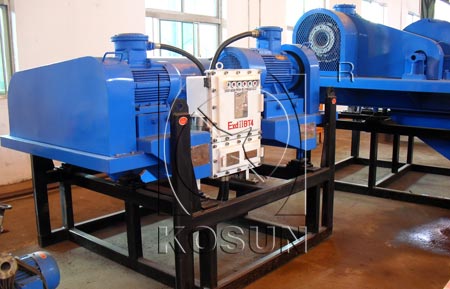1. It can operate at full speed to finish feeding, centrifugal sedimentation discharge and other procedures since it has a high degree of automation.
2. It can optimize the settling zne parameters and feeding mode, enhance the centrifuge sand removing effect. Its performance can parellel the same specifications of the imported centrifuge.
3. The noise of horizontal spiral unloading settlement centrifuge vibration is low. By improving the centrifuge rotational part machining accuracy and the dynamic balance accuracy, the centrifuge vibration and noise can drop to a low level.
4. The single machine has very large capacity, compact structure, small occupation, high degree of automation, convenient maintenance and closed operation.
5. Simplified solids control system, low energy consumption, lighter working load, and the purification efficiency increase by 30% than the original. It uses the frequency-conversion governor. Compared with similar products with low energy consumption, working speed is adjustable.
A centrifuge works on the principle of accelerated settling. By imparting additional G-forces to the content of a centrifuge, solids ( in a solids-laden fluid ) will settle much faster. To understand how a decanting centrifuge works after desilter, first look at a simple sedimentation vessel. Solids in this fluids will settle at the bottom of the vessel over a period of time. One way to speed up the process of settling is to reduce the height of the vessel, so the solids do not have as far to drop. If a specific volume is required, the vessels dimensions can be lengthened or widened. Depending on the rheological properties of the fluids and the size and density of the solids, settling time can still prove quite slow.
